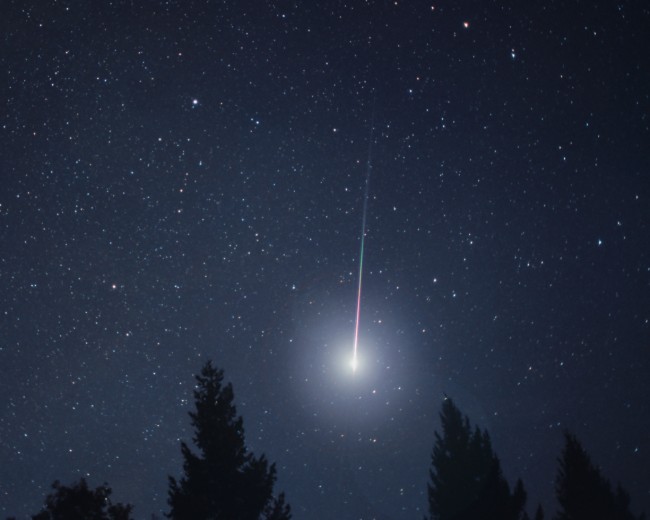
© UnknownA fireball, similar to the one pictured, was observed over Irish skies on 23 August 2011
The organisation added that meteor fragments are likely to have reached the surface but it remains unclear at this stage if the impact occurred overland or in the Atlantic Ocean.
Astronomy Ireland says it has already received dozens of reports of a bright fireball shooting across Irish skies at approximately 12:15 AM on Tuesday. 60-70% of reports received came from the Greater Dublin area with other reports being received from Tipperary, Meath, Cork, Mayo and Kerry.
Initial reports suggest the fireball moved westward in a line from north Dublin to south Mayo, meaning anyone living to the north of this line would have observed the fireball to the south and vice versa for those living south of the Midlands.
Only two meteorites have been successfully retrieved on the island of Ireland since the beginning of the 20th century. A meteorite was recovered in Northern Ireland in 1969, while in November 1999 a meteorite fall in County Carlow earned a local woman almost €15,000 when she recovered four egg-sized pieces. Fragments were subsequently donated to the National History Museum in London and Trinity College Dublin.
According to AI's Conor Farrell: "There is high confidence that this meteor produced meteorites. If the fireball was brighter than the Full Moon, as has been reported by many people today, then it is well worth looking for a meteorite (the part that survives the fall to Earth). However, it remains unclear whether they impacted overland or in the sea. Even if the main body of the meteorite crashed into the sea, smaller pieces could have fallen earlier on land", explained.
He added: "We would appeal to anyone who may have captured the fireball on video or camera to visit our website as soon as possible. We would also ask anyone who operates a CCTV system to review video from around 12:15am this morning."
Mr. Farrell said that average meteor is no bigger than a grain of sand. He continued: "When it collides with the Earth the closing speed can be of the order of 100,000mph and the friction with the thin air 100 miles above the ground quickly heats the tiny particle until it vapourises in a fiery streak which we call a shooting star and that typically only lasts one second or so."
"Most meteors are caused by small particles of dust that were left behind by comets. The brighter meteors come from larger particles. Fireballs are probably caused by objects the size of a pea, and larger. Comets leave very few large particles behind them so most fireballs probably come from pieces smashed off asteroids as the result of something (probably another asteroid) colliding with an asteroid, probably millions of years ago. Most asteroids orbit the Sun between the orbits of Mars and Jupiter i.e. between 2 and 4 times the Earth's distance from the Sun. Compared to planets, most asteroids are small (only a handful are bigger than 100 miles across) but they are rocky and some have metal cores", he concluded.
To report a Fireball or submit images/video visit the Astronomy Ireland
website.
Notable European Meteorite FindsThe
Cape York meteorite was found in Savissivik, Greenland, and is one of the world's largest iron meteorites.
Elbogen - The oldest recorded meteorite in the Czech Republic, also known as the "betwitched burgrave".
Hrascina meteorite - Croatian meteorite first speculated as originating from outer space.
Orgueil is a scientifically important carbonaceous chondrite meteorite that fell in SW France in 1864.
Reader Comments
to our Newsletter